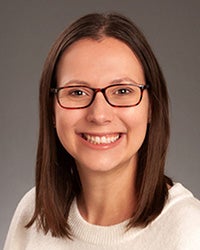“We were looking at how can we make taking French more affordable. What if we were to adopt an OER textbook,” Amber Hoye recalls a conversation one day in the Department of World Languages. And so Hoye, director of the World Languages Resource Center, along with Mariah Devereux Herbeck, professor of French, began looking for both financial resources and partners to create an open educational resource (OER) textbook for the French 101 and 102 courses.
They found partners in Brittney Gehrig, a French lecturer, along with three alumni who studied French at Boise State and who now teach middle and high school French in the Treasure Valley: Emily Blackburn, Madelynn Ruther and Sharon Westbrook.

“Another thing we’re trying to do with OER is make sure that students see themselves represented in the textbook,” Amber said. “We really wanted to make something that was multicultural, that not only represented students in the francophone world, but that also represented our students here at Boise State and in Idaho. It’s called localizing, the term we use in OER, the idea of making the content more relevant to your learners.” The team continues to update and localize content by adding photos from Boise and Boise State and instead of using French place names and characters in grammar examples, they localize the content to something like, “Amber drinks coffee at Hyde Perk in Hyde Park.”
The project team intentionally found images and examples to represent the varied community of students at Boise State and among the people of Idaho. The text references local companies and industries in Idaho with direct ties to French companies and communities living in Idaho. “If we’re talking about daily life and students don’t see their daily lives reflected—I think that can really impact our students. So just being purposeful and thinking about this bigger idea of are we showing students of different ages, of different genders, of ethnicities, of different socioeconomic backgrounds and ableness? This is another one you sometimes don’t see people who are disabled represented.”
The team found initial funding from Boise State Concurrent Enrollment. They realized that an OER textbook would save Boise State students money but if it could be used in K-12 French programs, the project would be a cost savings for those institutions too. The project found additional funding from the Center for Teaching and Learning and the Department of World Languages. The project received funding to complete an OER French 102 textbook through a Center for Teaching and Learning Investments Needed For Undergraduate Success and Equity (INFUSE) grant.
“I feel like we do have a lot of best practices to share,” Amber said and followed up with an announcement of a workshop that members of the team will present via the Boise State OER Group at 3 p.m. on Thursday, Dec. 1 via Zoom titled, “Revising and Remixing, oh my! How to Better Serve Student Learning with OER.”
Amber shared one very practical tip for anyone interested to start on an OER textbook project, “There’s a lot of people who think they have to start from scratch when it comes to creating an OCR textbook. But the way that a lot of these products are licensed gives you permission to build upon these—you can take from multiple sources which is wonderful. But it’s free and you have permission to do that and then you can really tailor the material to your students.”
Learn more about the French 101 OER project in this article which includes links to the French 101 OER textbook.